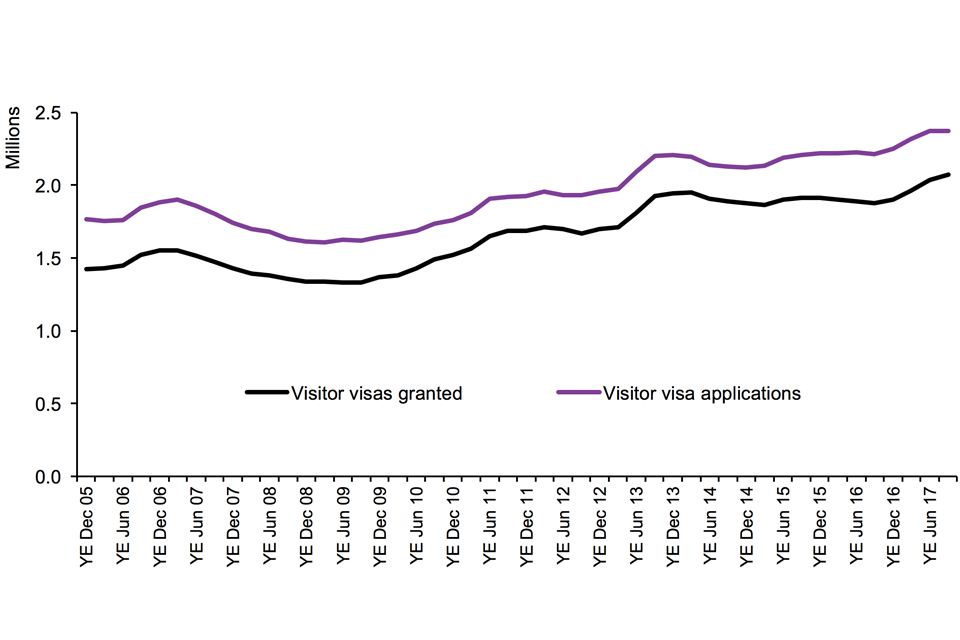Why do people come to the UK? (1) To visit
Published 30 November 2017
Back to Immigration statistics July to September 2017 content page.
This is not the latest release. View latest release.
Data relate to the year ending September 2017 and all comparisons are with the year ending September 2016, unless indicated otherwise.
This section provides an overview of emerging trends relating to visitors to the UK. Visitor arrivals data for non-European Economic Area (EEA) nationals are currently based on landing cards completed as people cross the border. For information on the Home Office consultation into the future of landing cards see Response to media reporting on landing cards. Visitor visa data relate to grants of visas applied for outside the UK. More information on non-visitor arrival and visa data by reason and nationality is included in Why do people come to the UK? (2) To work, Why do people come to the UK? (3) To study and Why do people come to the UK? (4) For family reasons.
In line with our plan to provide users annually with a more detailed commentary, a more detailed discussion of the figures was included in the Immigration Statistics April to June 2017 release Why do people come to the UK? (1) To visit Topic.
1. Key facts
In 2016, the number of non-EEA visitor arrivals increased by 0.7 million (7%) to 10.1 million. Over a quarter (26%) of all non-EEA visitor arrivals were United States (US) nationals.
Many nationalities, including US nationals, do not normally require a visa to visit the UK. Consequently the number of Visitor visas granted is much lower than the total number of arrivals. Over 2.6 million visas were granted in the year ending September 2017 and, of these, over 2 million (77%) were to visit.
There were 199,777 (11%) more Visitor visas granted in the year ending September 2017. There were notable increases in Visitor visas granted to Chinese nationals, up by 92,034 (20%) to 542,875 (excluding Hong Kong), and Indian nationals, up 42,123 (11%) to 427,737, and together these two nationalities accounted for almost half (47%) of all visit visas granted.
Long-term trends in visitor visa applications and grants

The image shows the number of Visitor visa applications and Visitor visas granted for the latest calendar year available. Totals for these data are available in Visas table vi 01 q.
Chart notes
Source: Home Office, Immigration Statistics July to September 2017. Statistics on Visitor visa applications and Visitor visas granted in the year ending September 2017 can be found in Visas table vi 01 q (Visas volume 1).
2. Data tables
Data on passenger arrivals and visa, sourced from Home Office administrative systems, can be found in:
Visas tables volume 1
Visas tables volume 2
Visas tables volume 3
Admissions tables
